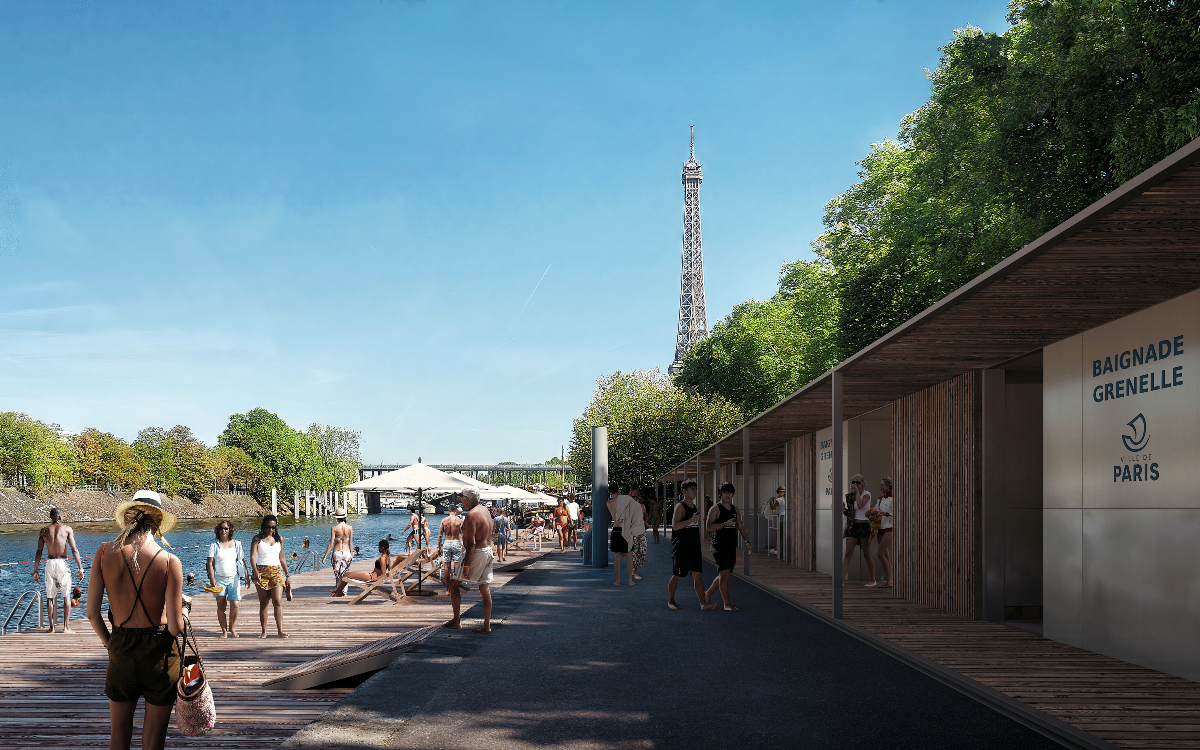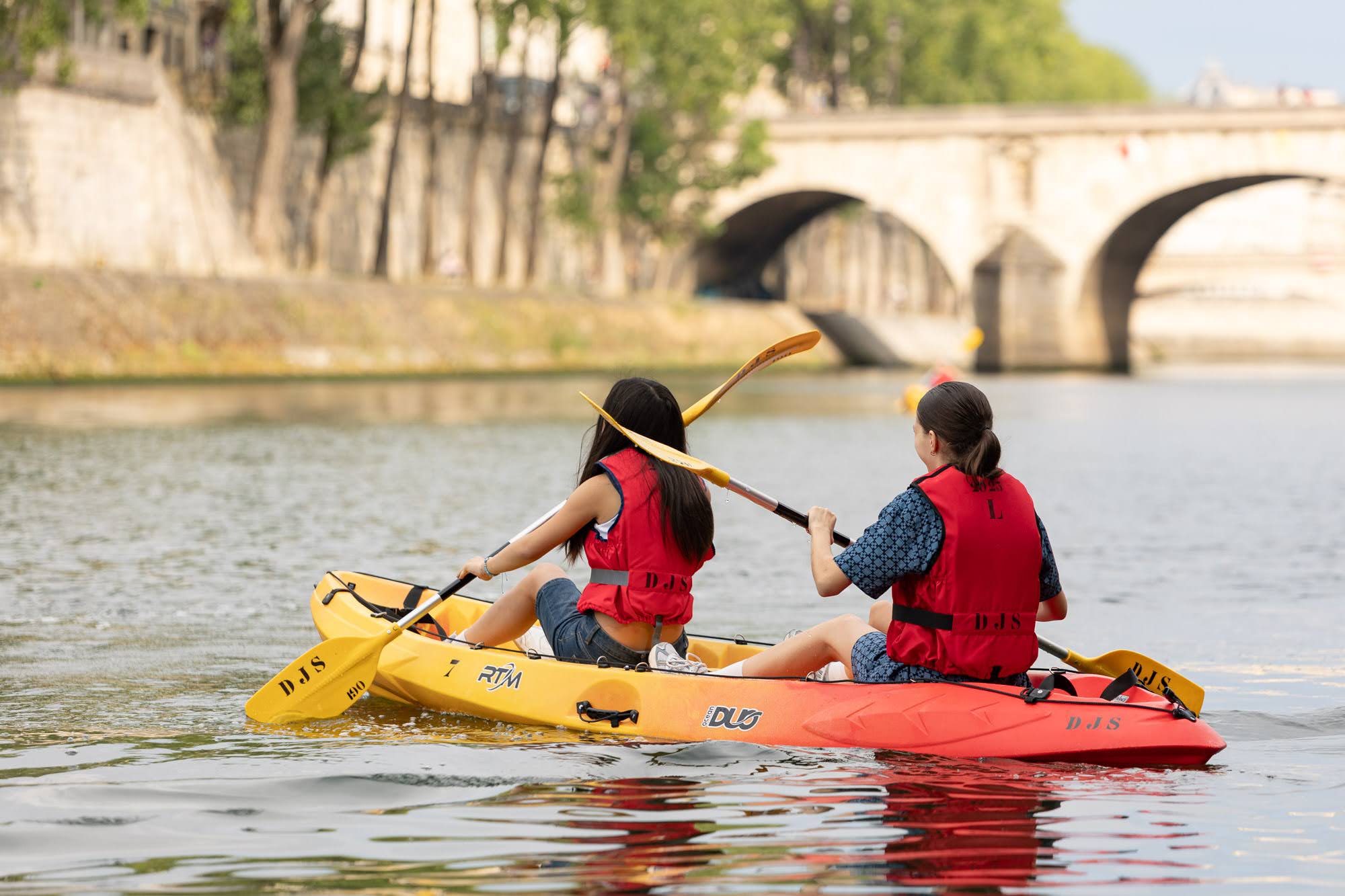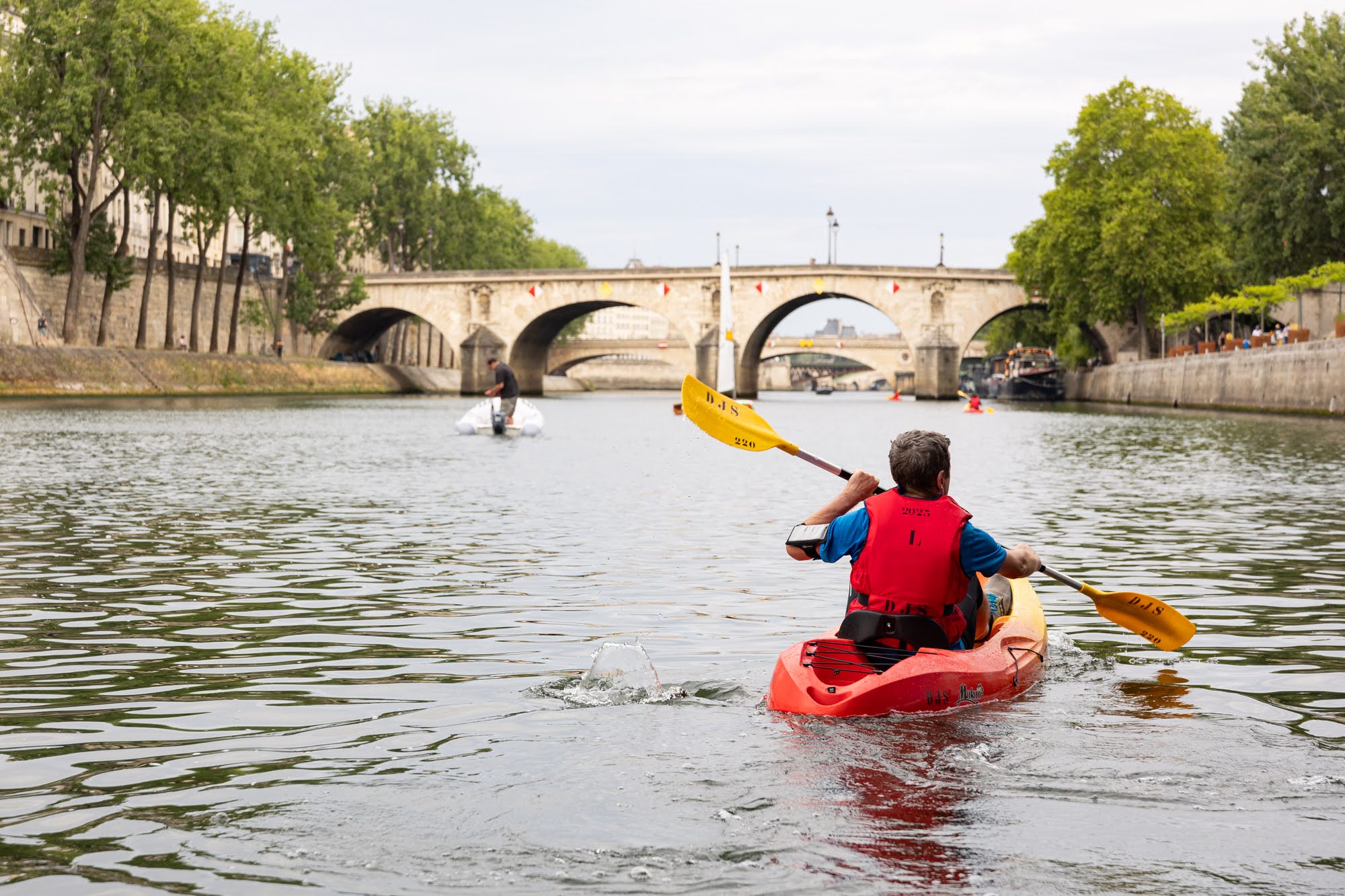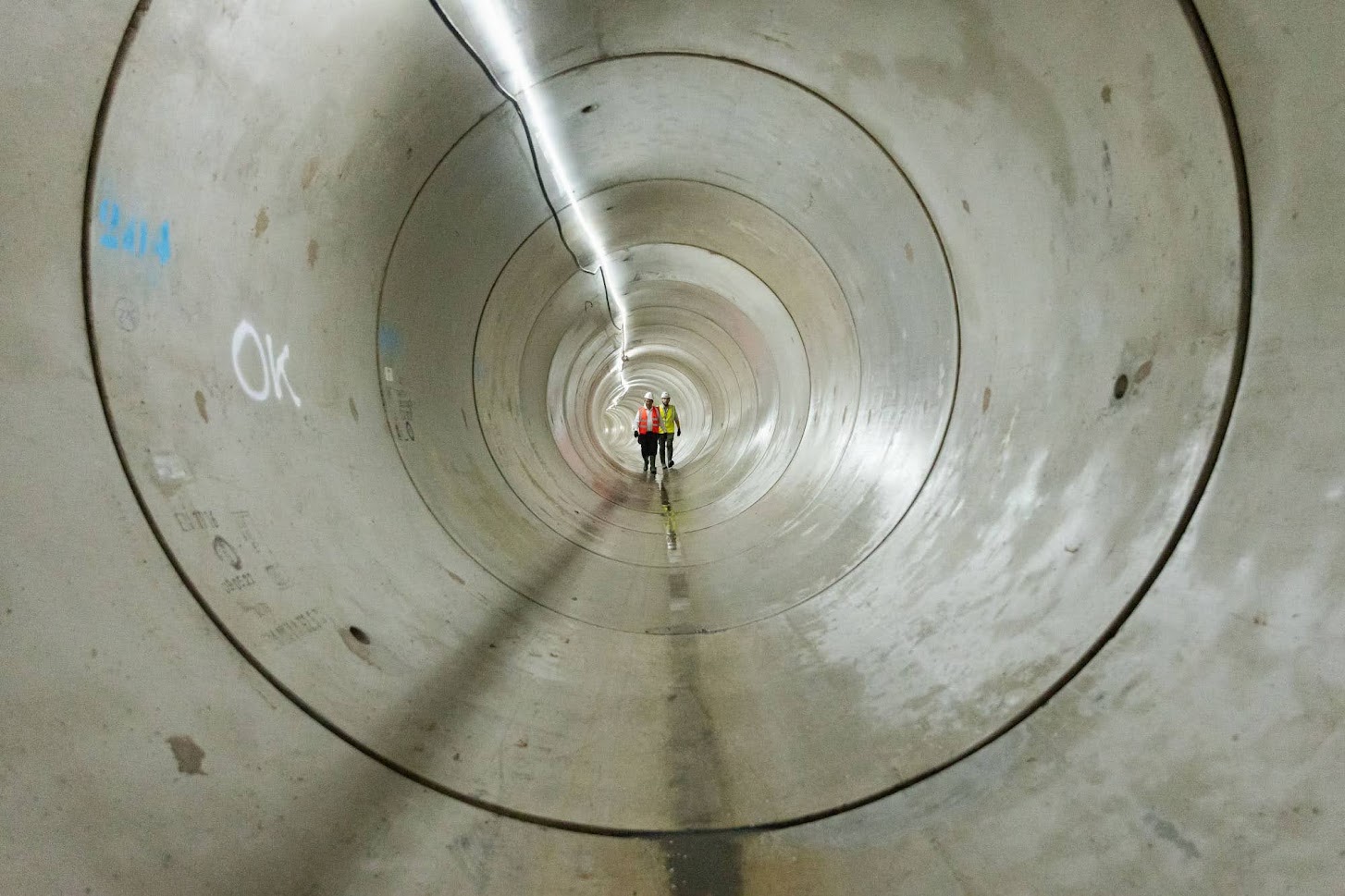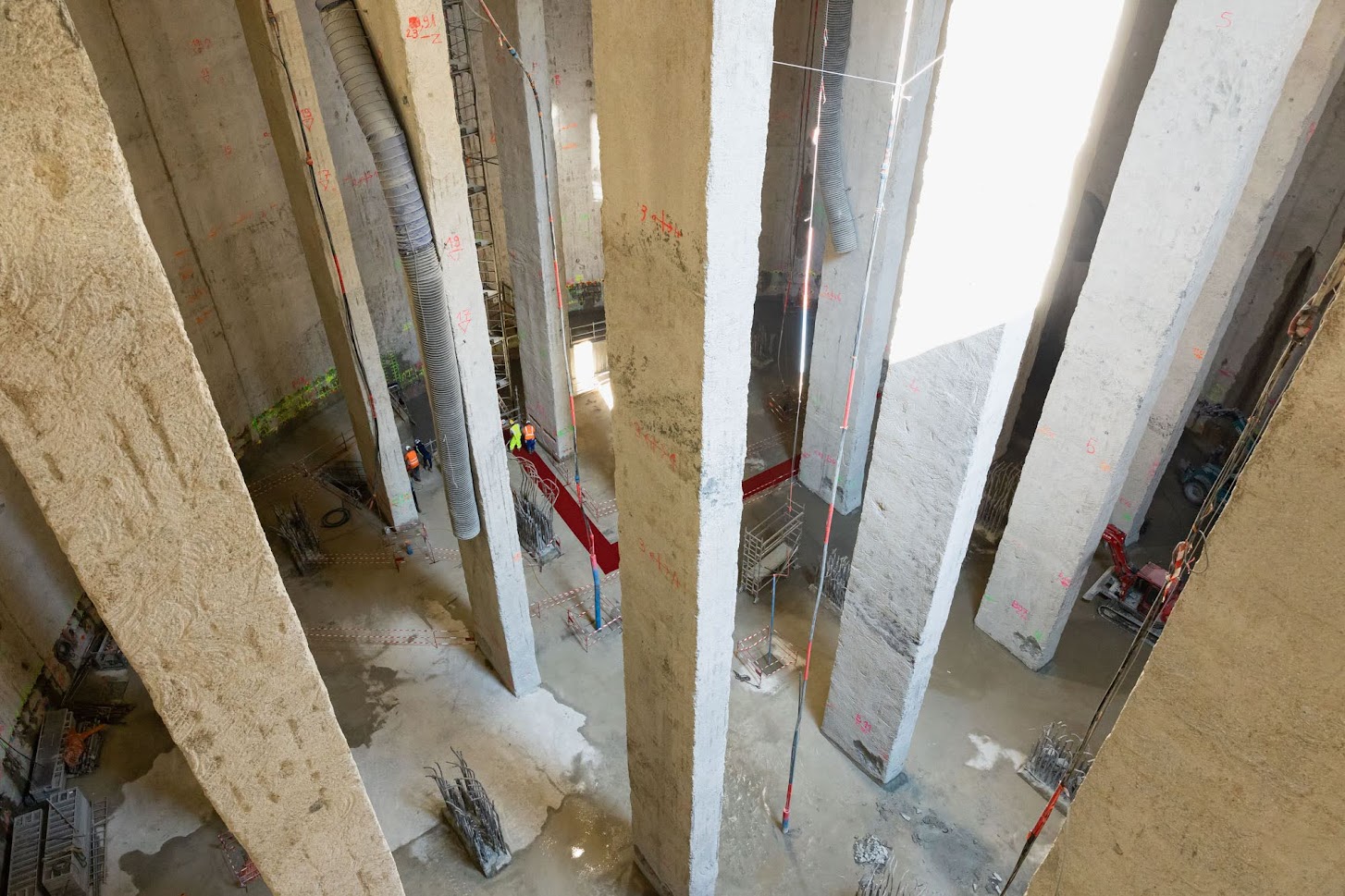Content
Cette page est aussi disponible en français
As part of the Paris 2024 Games, athletes took part in swimming events in the Seine. Next year, Parisians and tourist will be able to take a dip of their own on three different bathing sites.
A dream come true! Swimming in the Seine in complete safety will finally be possible! The City is working around the clock to ensure this part of the legacy of the Paris 2024 Olympic and Paralympic Games.
Since 2015, the City of Paris, the French government and local authorities have invested over 1.4 billion euros to enable the Olympic and Paralympic open-water events to be held in the Seine, and above all, to open up several bathing areas to the general public during the summer of 2025.
Bathing sites in 2025
At Bras Marie (Parc des Rives de Seine, right bank), where the city will continue to host water sports events, as is the case at Paris Plages, and where swimming will be possible.
Bras de Grenelle, between the Port de Grenelle and the banks of the Ile aux Cygnes (15th district);
In Bercy, at the Passerelle Simone de Beauvoir, below the Parc de Bercy (12th arrondissement).
The supervised waters will be marked by buoys and a pontoon to access them, with areas for changing, showering and storing gear on the docks.
The current situation
A closer look at bathing conditions
Last summer, bathing in the Seine was possible on an average of 7 in 10 days. Results differed depending on each site where testing happened (84% at the bras Marie, 71% at the pont Alexandre III, 58% at the pont du Garigliano). These figures take into account current water quality thresholds defined by the European Bathing Water Directive.
For the rest of the year (mid-September to June), bathing is not possible, as only the summer period is conducive to good water quality thanks to UV rays, lower flow and better weather.
Improving infrastructure
75% of work scheduled in Paris and it's surrounding area was completed last summer. The two disinfection units at the SIAAP (Service public de l'assainissement francilien) wastewater treatment plants, on which much of the improvement in water quality depends, have been operational since last summer.
To clean up the river, several new structures are currently under construction or have been completed. These include the Austerlitz rainwater retention basin, which has a holding capacity of around 50,000 m3, the equivalent of twenty Olympic swimming pools. It was completed in May 2024.
Exceptional weather events will be easier to deal with thanks to this new basin as it will prevent wastewater from being discharged into the Seine during heavy rainfall. Excess water will flow into the sewer system and be treated.
Other facilities are currently under construction and will be made operational in 2024. These structures include the Ru Saint-Baudile drainage basin (Seine-Saint-Denis), the VL 8 (a 10-kilometre-long high-capacity basin between Essonne and Val-de-Marne) and the Val-de-Marne stormwater treatment plant, which, like the Austerlitz basin, is designed to receive and treat rainwater before it is discharged into the environment.
Repopulating Parisian waters
Trout, eels, lampreys, alosa… Thirty-four species of fish now swim Parisian waters. That's a lot more than forty years ago, when only two species swam there. Since the 1980s, major purification efforts have improved water quality and restored a rich ecosystem. Today, the Seine in Paris has already reached the sanitary quality thresholds required for regular summer bathing.
Water quality
In early June 2023, Seine water analysis carried out on the basis of current European Union regulations produced "excellent results". Even earlier, in 2022, the Olympic swimming events sites in the Seine, showed that 91% of daily measurements were reached the quality threshold from July 20th to August 11th.
Unfortunately though, in August 2023, some events on the Seine had to be called off. Competitions scheduled for August 5th and 6th were cancelled due to unseasonably bad weather (highest recorded rainfall since 1965).
This cancellation was an untimely reminder of the link between weather conditions and water quality in the Seine. In response to this type of natural threat, several major structures, such as the Austerlitz basin, had to be built in Paris, Seine-Saint-Denis and Val-de-Marne, to regulate the flow of rainwater into rivers in the Seine-et-Marne department (77).
Following the detection of a deterioration in water quality, the State and City of Paris decided to act. An investigation by City services established that the incident was due to the malfunctioning of a valve at the Tolbiac-Massena water plant, upstream of the Tolbiac bridge. This had led to a discharge of a mixture of rainwater and wastewater into the Seine. As soon as the source of the discharge was identified, the valve was plugged to stop the incident and restore water quality.
Strengthening control and warning services
This type of weather event highlighted the need to strengthen monitoring, control and warning systems to limit any risk of unexpected discharge into the Seine. The bathing plan will be reinforced by preventative measures in the run-up to the Paris 2024 Games. All involved parties (State, City of Paris, Seine Saint Denis and Val de Marne Departmental Councils, SIAAP, Haropa Port, Voies Navigables de France, etc.) are implementing a number of possible measures to prevent further incidents and, if necessary, to ensure their immediate treatment.
This plan will focus on three areas:
-
Reinforcing monitoring of the Seine upstream and wastewater systems in Paris to reduce the risk of pollution (storm overflows, plant outlets, emergency pumping facilities, etc.);
-
Increased surveillance of all other potential sources of pollution, mobilizing all parties along the river and in its immediate vicinity (boat connections, evacuation systems for buildings open to the public along the Seine in Paris, and quayside restrooms and toilets).
-
Set up a system that identifies any pollution discharged into the Seine and take action to treat it (dedicated teams to monitor the waters of the Seine, to detect and locate any point sources of pollution for immediate intervention, availability of spare parts, etc.).
Boat compliance scheme
To stop wastewater discharges from boats or floating buildings docked in Paris ports along the Seine, the law now requires each boat or structure to be connected to the main wastewater networks of the the city.
This means connecting some 260 boats stationed in Paris to the sewage network. All Paris quays have been fully connected since summer 2022, with the exception of the Bois de Boulogne. Boats have until early summer to comply.
To help out boat owners and concerned parties, a grant of up to 6,000 euros has been made available. > Find out all about grants
Improving connections between houses and the sewage network
Upstream of Paris, some 23,000 connections are currently being treated. These are poor quality house connections that flow directly into the Seine and Marne rivers without any wastewater treatment.
Back to basics for the Seine
In 1900, when the Olympic Games were first held in Paris, the swimming events took place in the Seine between the Pont d'Asnières and Courbevoie. In 2024, the Parisian river will once again be an Olympic venue, with open-water swimming, para-triathlon and triathlon competitions starting from the Alexandre III bridge.
Some twenty potential sites spread over 16 communes of the Greater Paris Metropolis, bordered either by the Seine or the Marne, have now been identified as future bathing sites. Dispite a ban in 1923, people still bathed in the Seine until the 1960's when bathing stopped due to a deterioration in water quality. The 2024 Games acted as a lever and catalyst for investing in sustainable water quality, improving biodiversity and pollution reduction. As well as bathers, the whole ecosystem will benefit from this clean up project.
Some twenty potential sites spread over 16 communes of the Greater Paris Metropolis, bordered either by the Seine or the Marne, have now been identified as future bathing sites. Dispite a ban in 1923, people still bathed in the Seine until the 1960's when bathing stopped due to a deterioration in water quality. The 2024 Games acted as a lever and catalyst for investing in sustainable water quality, improving biodiversity and pollution reduction. As well as bathers, the whole ecosystem will benefit from this clean up project.
Get all the news, disruptions and opportunities related to the Games with the Paris Infos Jeux 2024 newsletter.
In short: how will bathing be made possible?
▶ RENOVATING THE WASTEWATER TREATMENT STATIONS at Valenton (Val-de-Marne) and Noisy-le-Grand (Seine-Saint-Denis) with purifying water systems to reduce polluted discharge into the environment.
▶ IMPROVING CONNECTIONS between homes and the sewage network to reduce rainwater contamination by wastewater.
▶ PROHIBITING SEWAGE DISCHARGE FROM SHIPS into rivers (Olympic law) and equipping ports with connection facilities.
▶ PLANTING MORE VEGETATION TO ENSURE RAINWATER and soaks into soil.
Stopping pollutant discharges
To achieve this, the authorities (City of Paris, French government, Ile-de-France sanitation authority, Metropole du Grand Paris and local authorities) have been working together to accelerate the environmental recovery of the Seine by reducing and, in some cases, eliminating polluting discharges. Therefore, water quality is constantly assessed by measuring two essentiel indicators: Escherichia coli (E. coli) and enterococci, whose thresholds have been defined by a European directive.
Several initiatives are underway to clean up the Seine and the Marne, its eastern tributary. Additional treatment of discharges from wastewater treatment plants upstream of Paris (Noisy-le-Grand and Valenton) will be carried out. This will have the effect of reducing polluted water discharges into rivers in the event of heavy rainfall.
To achieve this, as much rainwater as possible needs to be prevented from ending up in the sewage system, which has been known to overflow and discharge surplus into the Seine. To this end, urban engineering and landscaping facilitates will enable rainwater to pursue its natural course. Other benefits of landscaping include creating a cooler urban environment and natural watering of vegetation.
Storage basins may also be needed to temporarily hold back excess water and avoid polluting discharges. One such basin has been constructed in the Austerlitz district (13th arrondissement). It will be able to retain the equivalent of 20 Olympic-sized swimming pools of rainwater, before gradually releasing it back into the sewer system and treating it in wastewater treatment plants.
Bringing moored boats up to standard
Upstream of Paris, the local authorities responsible for sanitation and the water agency are also working to eradicate the 23,000 or so faulty connections in homes whose wastewater ends up in the river. Boats moored in Paris also have to comply to these standards.
The Seine will no longer be a depository for dishwasher, shower or toilet water! Since March 26th 2018, the law requires boats to be connect up to the quay's wastewater network within a maximum of two years.
With the opening ceremony and Olympic and Paralympic events only days away, the Seine is getting ready!
We want to hear from you!
Was this information useful to you?
Please note: we cannot reply via this form (please do not include any personal information).


